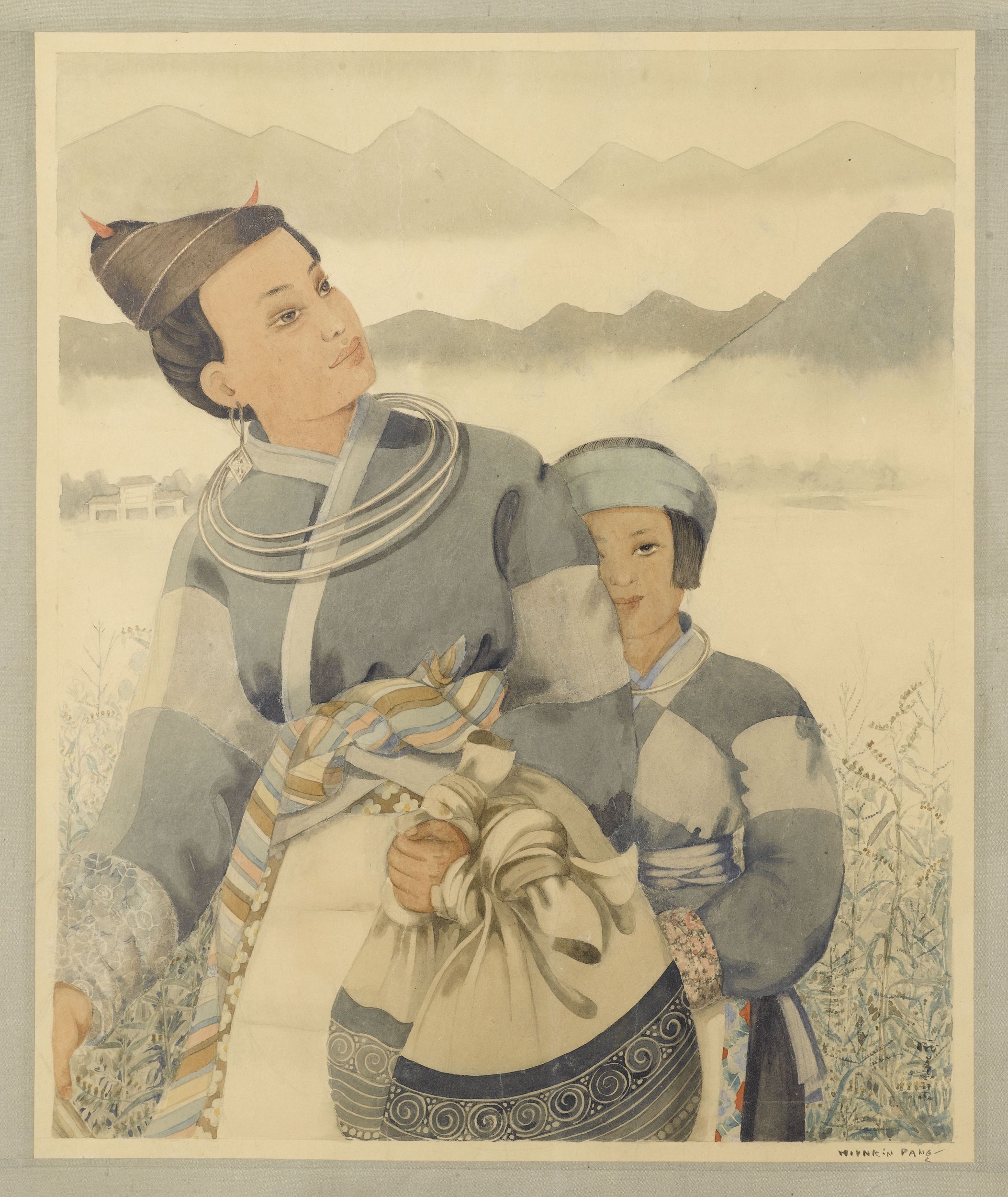
Deux femmes Miao (La Mère et la Fille)
Papier, Encre, Couleurs - Pigments
Peinture
Signé "Xunqin Pang"
Don manuel : Guo, Youshou 郭有守, Docteur
M.C. 8676
Signature: 龎薰琴. Hiunkin Pang
Traduction: Pang Xunqin In late 1938, Pang Xunqin was appointed as a researcher attached to the Academia Sinica and the National Central Museum, which had moved to Kunming because of the occupation of Nanjing by the Japanese. The Academia sent Pang Xunqin on a three-month mission not far from Kunming, in the province of Guizhou, to record the craft traditions of the Miao. Inspired by his encounters with the various Miao tribes, fascinated by the beautiful decorative motifs of their ethnic clothes, Pang painted between 1941 and 1946 a series of works in coloured ink on satin or on Xuan paper depicting Miao women and men in traditional costumes.
The work Mother and Daughter has been in the Cernuschi Museum collections since 1946. It was donated by Guo Youshou, who was, from 1946 to 1948, the first UNESCO director for education, posted to Paris. In the early 1940s, when he was minister of education in the province of Sichuan, Guo had actively supported various exhibitions and other artistic events in Chengdu. He was friends with many artists, including Pang Xunqin, and he likely acquired Mother and Daughter from the latter before taking up his UNESCO appointment in 1945.
Michael Sullivan commented that Pang’s renderings created “in the Chinese medium an entirely original style of painting that combined a painstaking record of the life, costumes and textiles of the Miao people, with a firm sense of formal design inspired by Braque and Leger, infused by lyrical, poetic mood that no other Chinese painter of his time achieved.
A touch of exoticism emanates from these figures of Mother and Daughter, dressed in their traditional costumes with their floral velvets, in an idyllic setting. These Miao women embodied the artist’s idealised vision of femininity: gracefully distant, virginally innocent and quietly seductive, unaffected by any cosmopolitan fashions. Pang declared in 1943: “My interpretation of this friendly ethnic community of Guizhou is in no way realistic and cannot be regarded in terms of ethnographic norms, for what my brushes paint reflects my own self”. In these paintings, he infuses his personal artistic expression with a deep nostalgia for a kind of purity that he perceives in the indigenous Miao, in their craft work, costumed festive events and daily tasks, to render a new vision of them.
Sullivan, Michael, “En souvenir de Pang Xunqin” in Pang Xunqi huaji, Pékin : Renmin meishu chubanshe, 1997